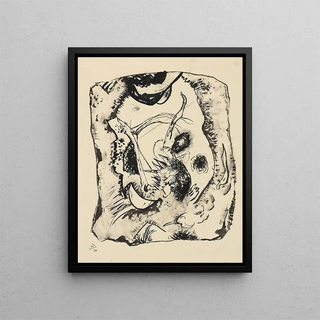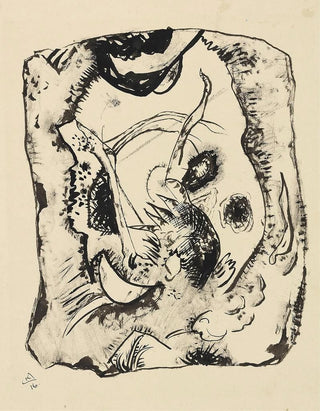Art print | Drawing for image on light background - Wassily Kandinsky


View from behind

Frame (optional)
In the fascinating world of modern art, few artists have captured the essence of abstraction like Wassily Kandinsky. His work, the "Art print for image on light background," stands out not only for its bold aesthetic but also for the emotional depth it conveys. This drawing, a true ode to color and form, invites viewers to immerse themselves in a world where art transcends the tangible to reach spiritual and intellectual spheres. Contemplating this piece reveals an invitation to explore the nuances of the human soul and the vibrations of the universe.
Style and uniqueness of the work
The "Art print for image on light background" is characterized by a masterful use of colors and geometric shapes, essential elements of Kandinsky's artistic practice. Far from being a simple visual representation, the work unfolds like a visual symphony, where each line and color resonates in harmony. The artist plays with contrasts, creating tensions between shapes and empty spaces, which gives the entire piece a captivating dynamic. This unique approach allows viewers to feel a multitude of emotions, ranging from serenity to agitation, while awakening insatiable curiosity. The lightness of the light background enhances the vibrancy of the colors, making the work both accessible and deeply introspective.
The artist and his influence
Wassily Kandinsky, an emblematic figure of the Bauhaus and pioneer of abstract art, left an indelible mark on the artistic landscape of the 20th century. His relentless quest for harmony between art and spirituality shaped his vision and practice. Influenced by music, he often sought to establish parallels between sounds and colors, convinced that art should evoke feelings similar to those elicited by music. This approach not only redefined the boundaries of art but also inspired generations of artists to explore new avenues of expression. By integrating elements of popular culture and spiritual traditions, Kandinsky was able to create a universal visual language that continues to resonate today, making him

Matte finish

View from behind

Frame (optional)
In the fascinating world of modern art, few artists have captured the essence of abstraction like Wassily Kandinsky. His work, the "Art print for image on light background," stands out not only for its bold aesthetic but also for the emotional depth it conveys. This drawing, a true ode to color and form, invites viewers to immerse themselves in a world where art transcends the tangible to reach spiritual and intellectual spheres. Contemplating this piece reveals an invitation to explore the nuances of the human soul and the vibrations of the universe.
Style and uniqueness of the work
The "Art print for image on light background" is characterized by a masterful use of colors and geometric shapes, essential elements of Kandinsky's artistic practice. Far from being a simple visual representation, the work unfolds like a visual symphony, where each line and color resonates in harmony. The artist plays with contrasts, creating tensions between shapes and empty spaces, which gives the entire piece a captivating dynamic. This unique approach allows viewers to feel a multitude of emotions, ranging from serenity to agitation, while awakening insatiable curiosity. The lightness of the light background enhances the vibrancy of the colors, making the work both accessible and deeply introspective.
The artist and his influence
Wassily Kandinsky, an emblematic figure of the Bauhaus and pioneer of abstract art, left an indelible mark on the artistic landscape of the 20th century. His relentless quest for harmony between art and spirituality shaped his vision and practice. Influenced by music, he often sought to establish parallels between sounds and colors, convinced that art should evoke feelings similar to those elicited by music. This approach not only redefined the boundaries of art but also inspired generations of artists to explore new avenues of expression. By integrating elements of popular culture and spiritual traditions, Kandinsky was able to create a universal visual language that continues to resonate today, making him






